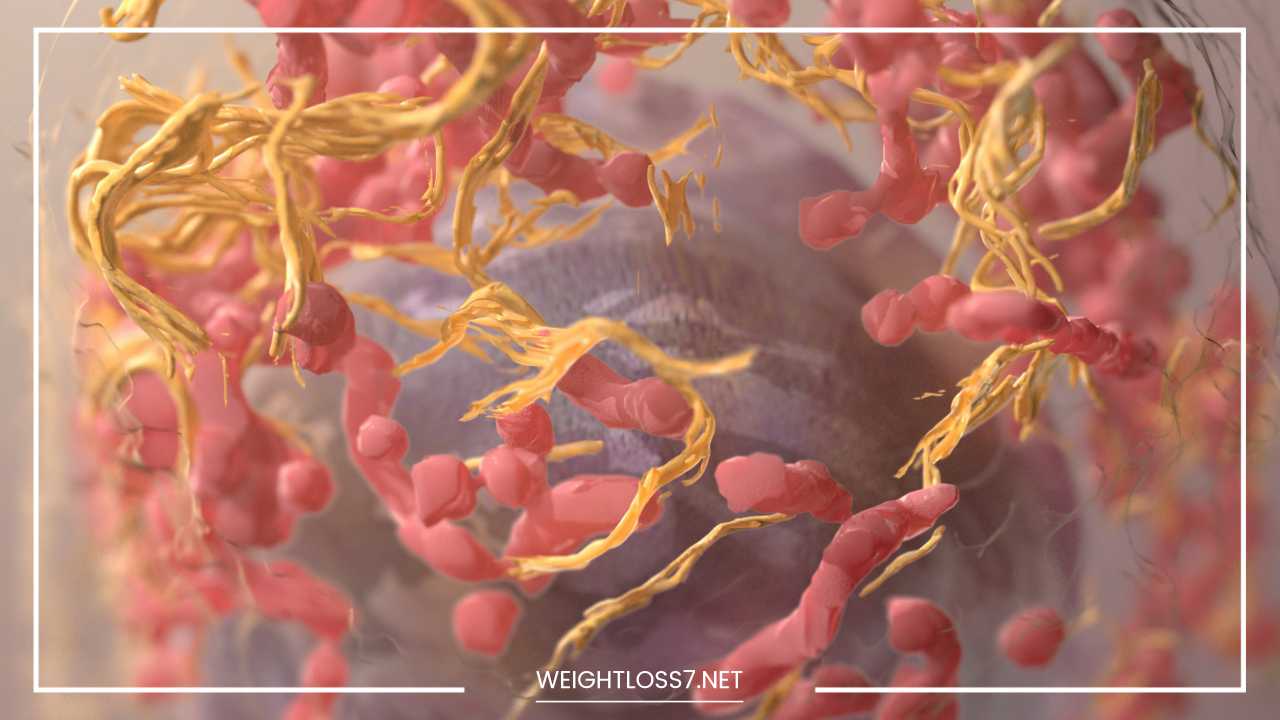Skin Cancer: Prevention, Detection & Treatment

Skin Cancer
Skin Cancer: A Comprehensive Guide to Understanding, Prevention, and Early Detection
Skin cancer, the uncontrolled growth of abnormal skin cells, is the most prevalent form of cancer globally. It affects millions of people each year, highlighting the importance of awareness and proactive measures.
This blog post dives deep into the world of skin cancer, empowering you with knowledge for prevention and early detection.
We’ll explore the different types, delve into the underlying causes and risk factors, and equip you to recognize the warning signs. Additionally, we’ll discuss essential prevention strategies and emphasize the importance of regular skin checks.
Unveiling the Different Types of Skin Cancer
The three main types of skin cancer present with distinct characteristics and varying degrees of aggressiveness. Here’s a closer look at each:
-
Basal Cell Carcinoma (BCC): The most common type, BCCs account for roughly 75% of skin cancers. They are slow-growing and rarely spread to other parts of the body. Typically, BCCs appear as pearly or waxy bumps on sun-exposed areas like the face, ears, neck, scalp, shoulders, chest, back, arms, and legs.
-
Squamous Cell Carcinoma (SCC): Less common than BCC, SCCs develop more rapidly and have a higher chance of spreading if left untreated. They often present as red, scaly patches that may bleed easily. SCCs most commonly affect areas that receive significant sun exposure, but they can also develop on the lips, inside the mouth, and on the genitals.
-
Melanoma: The least frequent but most aggressive form of skin cancer, melanoma can spread rapidly to other organs if not detected and treated promptly. Melanomas can appear anywhere on the body and often resemble moles. However, unlike regular moles, melanomas exhibit certain irregularities that can serve as warning signs. We’ll delve deeper into recognizing these signs later in the blog.
Unveiling the Culprits: Causes of Skin Cancer
The primary culprit behind skin cancer is ultraviolet (UV) radiation from the sun. Excessive exposure to UV rays damages the DNA in skin cells, leading to mutations and uncontrolled growth. Several factors can increase sun exposure and, consequently, UV radiation damage:
-
Fair Skin Complexion: Individuals with lighter skin tones have less melanin, a pigment that shields the skin from UV rays. This makes them more susceptible to sun damage and skin cancer.
-
Family History: Having a close relative (parent, sibling, or child) with skin cancer increases your risk. If skin cancer runs in your family, consult a dermatologist for personalized advice and discuss appropriate screening strategies.
-
Sunburn History: Severe sunburns, especially during childhood, can significantly elevate your risk of developing skin cancer later in life. Sunburns cause significant DNA damage in skin cells, and repeated episodes over time increase the risk of mutations leading to cancer.
-
Compromised Immune System: People with weakened immune systems due to organ transplants, HIV/AIDS, or certain medications are at a higher risk of developing skin cancer. A healthy immune system helps identify and eliminate abnormal cells before they can turn cancerous.
-
Medications: Certain medications, such as immunosuppressants used after organ transplants or to treat autoimmune diseases, can suppress the immune system and increase sun sensitivity. If you take such medications, discuss sun protection strategies with your doctor.
Understanding Your Risk Factors for Skin Cancer
While sun exposure is the main culprit, other factors can contribute to your risk of developing skin cancer. Here’s a breakdown of some key risk factors:
-
Age: The risk of skin cancer increases with age as your skin accumulates sun damage over time. Sun exposure throughout your life contributes to this risk.
-
Multiple Atypical Moles: Atypical moles are moles with irregular borders, uneven coloration, or a larger than usual size (greater than 6 millimeters). Having many atypical moles signifies a higher risk of melanoma. If you have several atypical moles, consult a dermatologist for regular monitoring.
-
Actinic Keratosis: These are rough, scaly patches caused by long-term sun exposure. While not cancerous themselves, actinic keratosis can sometimes develop into SCC. Early detection and treatment of actinic keratosis can help prevent SCC.
Recognizing the Warning Signs: When to Seek Medical Attention
Early detection is paramount for effective skin cancer treatment. The sooner skin cancer is identified and treated, the better the chances of a successful outcome. Here are some warning signs to be aware of that warrant a visit to your dermatologist:
-
A New or Changing Mole: Asymmetry, irregular borders, uneven coloration (with shades of brown, black, red, white, or blue), a diameter larger than 6 millimeters, and any change in size, shape, or color of a mole are all potential signs of melanoma. Remember the ABCDE rule of mole checks: Asymmetry, Border irregularity, Color variation, Diameter larger than 6 millimeters, and Evolving (changing appearance).
-
A Persistent Sore: If a sore on your skin persists for weeks, even after proper care with ointments or bandages, consult a doctor. Skin cancers can sometimes present as sores that don’t heal normally.
-
Red, Scaly Patches: Patches that bleed easily, become crusty, or feel rough and sandpapery could be a sign of SCC. These patches often appear on sun-exposed areas like the face, ears, scalp, arms, and legs.
-
Unusual Skin Growths: Any new, unusual bump, nodule, or mass on your skin, especially if it grows rapidly or changes in appearance, warrants a doctor’s visit. Early detection is crucial, and a dermatologist can perform a biopsy to determine the nature of the growth.
-
Changes in Existing Moles: Keep an eye on existing moles for any changes. If a mole bleeds, becomes itchy, or develops a halo (a lighter or darker area surrounding the mole), consult a dermatologist.
Remember: Early detection is critical for successful skin cancer treatment. If you notice any of these warning signs, schedule an appointment with a dermatologist for a proper diagnosis. Don’t hesitate to seek professional help – early intervention can significantly improve the outcome.
Sun Protection: Your Essential Defense Against Skin Cancer
Sun protection is the cornerstone of skin cancer prevention. By incorporating these simple strategies into your daily routine, you can significantly reduce your risk of developing skin cancer:
-
Seek Shade, Especially During Peak Sun Hours: Limit your time outdoors, particularly during the midday hours (usually 10 am to 4 pm) when the sun’s rays are strongest. If you must be outside during this time, seek shade whenever possible. Look for shade from trees, umbrellas, or canopies.
-
Sun-Protective Clothing: Clothing provides a physical barrier against UV rays. When outdoors, wear long-sleeved shirts, pants, and wide-brimmed hats that cover your head, neck, ears, and face. Opt for tightly woven fabrics with a high Ultraviolet Protection Factor (UPF) rating. UPF clothing provides a more accurate measure of UV protection than SPF. A UPF rating of 50 indicates that only 1/50th of the UV rays will penetrate the fabric.
-
Sunscreen: Your Daily Essential: Apply a broad-spectrum sunscreen with SPF 30 or higher generously and evenly to all exposed skin 15 minutes before sun exposure. Reapply sunscreen every two hours, or more often if swimming or sweating heavily. Broad-spectrum sunscreen protects against both UVA and UVB rays. UVA rays penetrate deep into the skin and contribute to wrinkling and premature aging, while UVB rays are the primary cause of sunburns and contribute to skin cancer.
-
Don’t Forget Your Lips and Sunglasses: Apply a lip balm with SPF 30 or higher to protect your lips from sun damage. Choose sunglasses that block UVA and UVB rays. Look for sunglasses that meet the International Organization for Standardization (ISO) standard 12312-1, which ensures they block at least 99% of UVA rays and UVB rays up to 380 nanometers.
-
Be Extra Cautious Around Reflective Surfaces: Sand, snow, and water reflect UV rays, intensifying their effect on your skin. Be extra vigilant about sun protection when spending time at the beach, pool, or in snowy environments.
-
Seek Shade for Infants and Young Children: Babies under six months old should be kept entirely out of direct sunlight. For older children, use protective clothing, hats, and broad-spectrum sunscreen with SPF 50+ to shield their delicate skin.
Embrace Regular Skin Checks: Early Detection Saves Lives
Regular skin self-exams are a crucial part of early skin cancer detection. Here’s a guide for performing self-exams:
-
Schedule Monthly Skin Checks: Set aside time each month to examine your entire body for any new or unusual moles, growths, or changes in existing moles.
-
Examine All Skin Surfaces: This includes the front and back of your body, your scalp (using a mirror), under your arms, between your toes, and your genitals.
-
Use a Mirror and Ask for Help: Use a hand mirror to examine hard-to-see areas like your back and scalp. Don’t hesitate to ask a partner or family member to help you examine your back and other areas you may find difficult to see on your own.
-
Know What to Look For: Be mindful of the warning signs mentioned earlier, such as asymmetry, irregular borders, uneven coloration, and changes in size, shape, or color of moles.
-
Document Changes: If you notice any suspicious changes, take note of their location and appearance. You can even take pictures to monitor any changes over time.
Remember: While self-exams are an important tool, they are not a substitute for professional skin cancer screenings. Schedule regular appointments with your dermatologist for a thorough skin examination.
Benefits of Dermatologist Skin Cancer Screenings:
-
Dermatologists Are Trained Professionals: Dermatologists have extensive training in identifying skin abnormalities and can detect potential skin cancers even in their early stages. They may use specialized equipment, such as dermatoscopes, to get a magnified view of suspicious lesions.
-
Early Detection is Key: Early detection is critical for successful skin cancer treatment. A dermatologist can identify and diagnose skin cancer at its earliest stage, significantly improving the chances of a complete cure.
-
Personalized Screening Recommendations: Based on your individual risk factors, such as fair skin, family history, and history of sunburns, your dermatologist can recommend a personalized screening schedule. This may involve more frequent screenings if you have a higher risk.
Additional Tips for Maintaining Healthy Skin:
-
Maintain a Healthy Lifestyle: A healthy lifestyle that includes a balanced diet rich in fruits, vegetables, and whole grains can contribute to overall skin health.
-
Manage Stress: Chronic stress can weaken the immune system, potentially affecting your skin’s health. Practice stress-management techniques like yoga, meditation, or deep breathing exercises.
-
Don’t Smoke: Smoking weakens the immune system and can contribute to premature skin aging. If you smoke, quitting is one of the best things you can do for your overall health, including your skin.
-
Stay Hydrated: Drinking plenty of water helps keep your skin hydrated and supple. Aim for eight glasses of water per day.
Final Word:
Skin cancer is a prevalent concern, but with knowledge and proactive measures, you can significantly reduce your risk.
By incorporating sun protection strategies into your daily routine, performing regular self-exams, and scheduling regular skin checks with your dermatologist, you can empower yourself to take charge of your skin health.
Early detection is the key to successful treatment. Remember, when it comes to skin cancer, knowledge is power.
Don’t hesitate to speak to your doctor or dermatologist if you have any questions or concerns. By working together, we can prevent skin cancer and ensure healthy, beautiful skin for life.

















